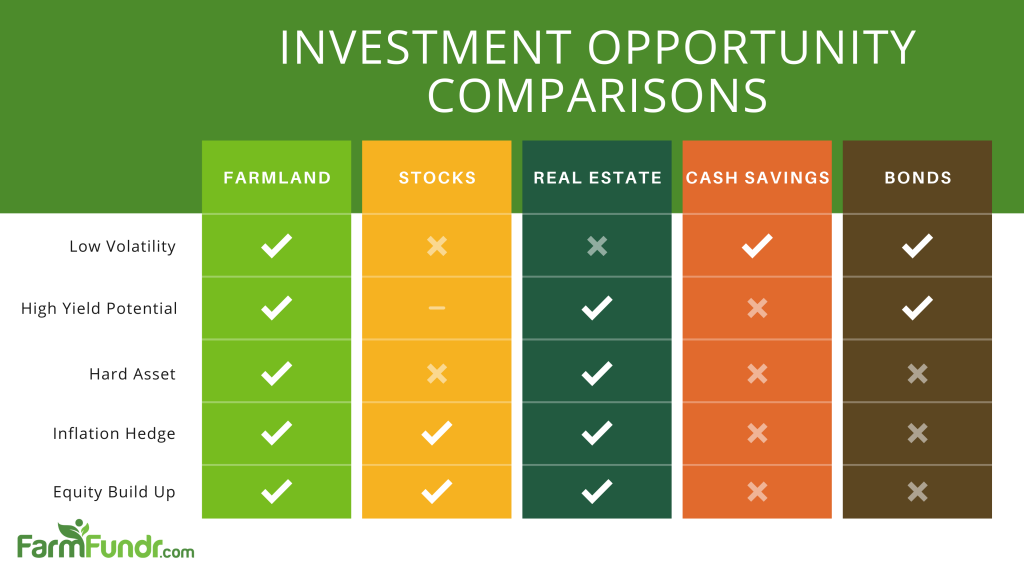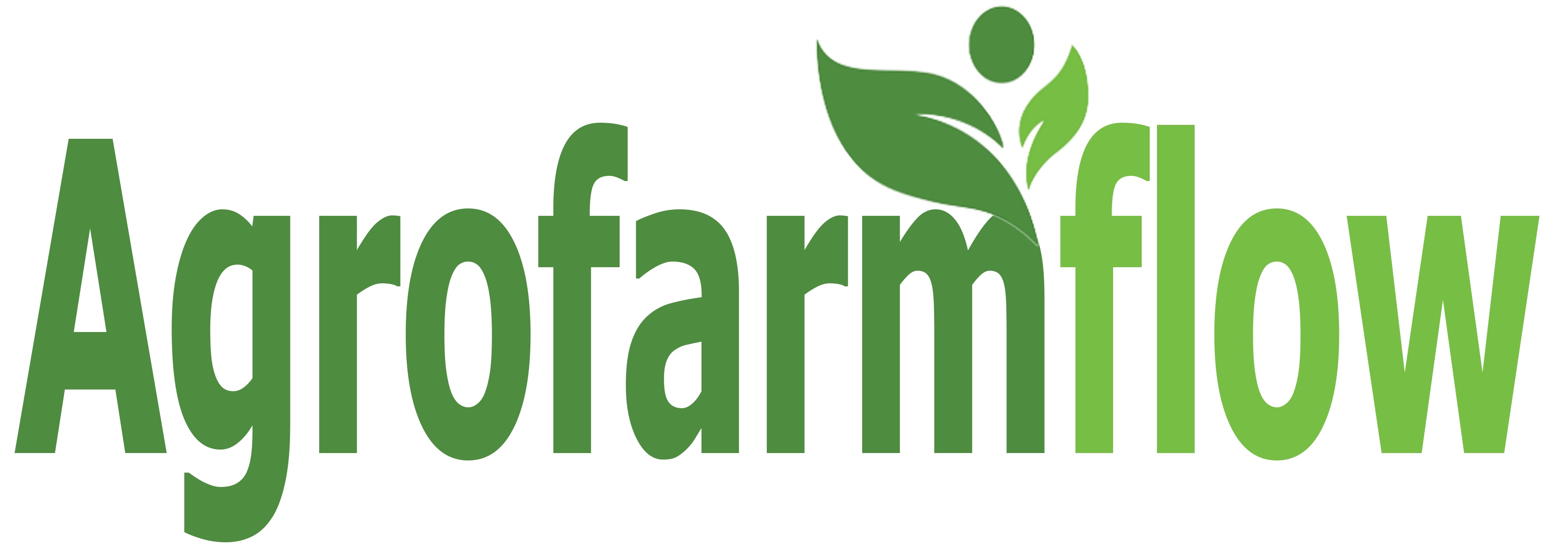
The opportunity to take part ownership in quality farmland is exciting, but it does raise some questions for first time agricultural investors.
Here are the questions we receive most often. If you can't find an answer, don't hesitate to contact us
With food demand expected to increase up to 98% by 2050, agricultural markets will be changing like we haven€™t seen before. Farmers across the globe will need to increase crop production by expanding the amount of farmland being utilized and by enhancing productivity on existing land. Farmland is truly the most important asset in the world. This is why considering ownership in farmland can be an extremely beneficial move. They don€™t make anymore of it!

By 2050 the world population will grow to over 10 billion people.

In addition to 3 billion more people, the middle class will grow at an unprecedented rate.

An additional 3 billion people will enter the middle class causing food demand to sky rocket. This will all have to be accomplished on less farmland.

The U.S. alone loses almost 500,000 acres of farmland a year.That€™s a loss of nearly 15,000,000 acres of farmland by 2050.

The average U.S. farmers age is 58. As more and more farmers reach the retirement age, a large portion of land will change hands supplying the market with a great opportunity to invest in farmland.
There is no better asset to own than one that increases in value over time and keeps pace with inflation. What if you could invest in something tangible that produces worldwide benefits? According to one study, one of the last things people are willing to cut from their budget is food. Here are some of the various benefits an investment in agriculture can provide.
When you invest in agriculture, you are investing is a physical plot of land. This land€™s value will only appreciate over time, unlike stocks that often depreciate.
Because agriculture investments are long term, they can be set up to be kept in the investor€™s family and passed down to future generations. Agriculture investments can appreciate indefinitely.
Farm returns have an average annual return of 11.5%. With the demand for farmers to produce up to 98% more food by 2050, now is an opportune time to consider an investment in farmland and capitalize on those returns.
Over time, farmland has proven to have a positive correlation with inflation. More so than bonds, the stock market, and even gold. On average, no investment offers a hedge against inflation like farmland.
Investing in farmland benefits the investor more than just in financial gains. An investment in agriculture has social and economical benefits that include keeping farmers in the business of farming, keeping the world fed and clothed, bringing jobs and success to a community and supporting family businesses.

There are several tax benefits to take advantage of as an agricultural investor. Of course, each deal is structured differently, but we have listed a few of the common tax advantages associated with Agriculture Investing.
Most investors are familiar with depreciation from experience with investments in real estate. What does depreciation look like on a farm? The land itself will not depreciate in the eyes of Uncle Sam, but certain crops and varieties, primarily grapes, fruit and nut trees, may qualify for a tax depreciation benefit.
These types of crops only produce in limited cycles and sparsely at all during the initial growth period. Once the fruit and nuts can be harvested for an income, the IRS begins to depreciate the asset under the General Depreciation System (GDS) over a ten-year recovery period. Also, capital improvements may be deducted from gross income as depreciation expense. These advantages can be passed on to investors depending on deal structure, crop age, and so on.
This is how former President George W. Bush got a special tax break for land adjacent to his property, that€™s untouched ground, managed specifically for wildlife and hunting. Farmers and investors in agriculture have been doing it too. The purpose of these trusts is preserving the natural ground, ecosystems, and water resources that we often take for granted. When a farmer puts land in a conservation trust, the land remains privately owned. The trust then purchases a conservation easement on the land which inhibits all future development, even to future owners of that land. This protects the land from all future development.
Conservation easements offer many tax advantages. In certain instances, placing an easement on one€™s land may result in property tax savings for the owner. Depending on how a deal is structured, these savings may be passed down to investors as well.
The United States has historically been a proponent of agriculture as a means of economic growth. As such, all fifty states have developed favorable property tax rates for agricultural land to assist farmers in maintaining their claim to the land, as expansion threatens to turn more fields into sub divisions. Many states weigh a farmer€™s claim to these benefits by determining the viability of the farm€™s economic standing. A low property tax rate can result in a reduced tax liability for investors, depending on the type of deal they invested in. In certain states, these tax exemptions for agricultural land can be very lucrative for farmers and agricultural investors.Conservation easements offer many tax advantages. In certain instances, placing an easement on one€™s land may result in property tax savings for the owner. Depending on how a deal is structured, these savings may be passed down to investors as well.
Ag Investing is a prudent way to diversify a portfolio against risk. However, it is still an investment with common risks. We recommend consulting with a tax adviser and/or attorney before making investment decisions.
To those in the industry, farming is a way of life. Yet as farms consolidate and city populations grow, the farming lifestyle is becoming more and more unique. Investors looking to diversify have multiple options when it comes to investing in farmland. Here are the main options:
Let€™s get the obvious one out of the way.
€
There is plenty of opportunity and personal reward that comes from being a farmer. Keep in mind the challenges associated with this way of life. Expect long hours and high upfront costs when starting out. You can also expect to wear several different hats just to keep your operation going.
Although small farms and hobby farms are on the rise, don€™t step into this arena lightly. Getting the most out of a farm takes an experienced farmer with an eye on the bottom line. In addition, costly equipment to support your farm are needed. Non-appreciating pieces of equipment can put a large dent in profit. It€™s simply not a great investment on a small scale.
There are many private equity funds that are available to investors. Most funds have a minimum entry for around $500,000, with the average private equity fund requiring between 1 and 5 million. Private equity funds will then purchase farmland and lease it out to a farmer. You would receive any appreciation as well as predetermined lease rates.
REITs (real estate investment trusts) are companies that own or finance income-producing real estate across a range of property sectors. REITs offer a higher level of liquidity compared to owning the actual farm ground. Another benefit is the lower initial investment requirements. This is great for investors, until you consider the buy and lease business model used by most REITs. This model can limit returns.It also puts investors on the other side of a middleman which can add a layer of uncertainty in the investment.There are only 2 publicly traded REITS in the united states at this point. Market volatility is likely, due to speculation from traders.
€¢ While REITs offer liquidity, that is where their benefits stop.
€¢ The lower returns and added complexities diminish many of the benefits that come from investing in agriculture.
€¢ REITs determine what land they want to invest in not what land you want to invest in.
€¢ REITs can buy property in the US or in other countries.
€¢ You can learn more about Farmland REITs here.
Agriculture crowdfunding is relatively new in the investment world and allows investors to buy fractional equity in farmland. Crowdfunding is similar to REITs as there is a minimal upfront investment, however, it does not share the same liquidity of REITs. For as little as $10,000, investors can own a piece of a real working farm.
Crowdfunding allows investors the control to invest in the farmland that best suits their investment goals. They have control on selecting the geographical area, commodity type and will experience the upsides of owning a piece of an individual farm.
Returns may vary depending on the offering, but some crowdfunding offerings manage the farmland so that investors actually receive the crop€™s proceeds, not lease payments. This increases the return on investment.
When working with the right farmland crowdfunding company, you€™ll experience financial returns while being able to watch the direct impact your investment has on a real working farm.
It€™s important that investors do their own research and create a diversified plan that fits their investment needs. When looking to diversify or hedge against inflation, investing in farmland is a great place to start. The next question is, how will you invest in farmland?
If you want to own an actual farm while experiencing better financial returns of a traditional REIT, then crowdfunding may be the right choice for you.
€Click here to view current available agriculture investment properties.
As with any investment, there are risks associated with agricultural investments. Some of the risks in this particular asset class include drought, fire, pests or disease that could damage crops. Politics can also play a hand when it comes to agricultural restrictions and risks.
Geographic and commodity diversification can usually protect against any risks. Hedging and crop insurance are also available for some commodity crops. When investing in farmland, you want to work with a partner who has a proven track record for successfully managing farms and an eye for finding high-profit potential properties that have as little risk as possible.
Here are some factors to consider when determining if an investment in farmland is right for you. And if it is, what should you look for when choosing a property?
Investors must realize that farmland is a long term investment. Return on an investment can vary from 12 months to 7 years before seeing your first return. They must also realize there are short term fluctuations in commodity prices, and returns are better measured over longer periods in farmland investments.
Organic farmland investments are a good investment. However, not all soil and geographical locations are suitable for organic production. A good conventional farm may not make a good organic farm. There are many variables that need to be analyzed before buying organic farmland or converting conventional farmland to organic.
€
The ideal farmland portfolio will have a variety of farms, producing multiple different crops. Different locations of farms will provide a good hedge against risk factors such as drought, pest infestation or weather.
€
When investing in farmland, soil fertility and water are the two most important factors. Soil is classified under class 1, 2 and 3 soils. Class 1 is the best. There are a variety of crops that can grow in different soil types and it is important to match the commodity grown to the proper soil type to maximize yield. There are three water sources as well, including rain water, well water and surface water (delivered from a lake or river on demand). All farmland must have one or all three sources for it to have a chance at being a good investment.
€
Despite popular belief, most family farms across the United States are very sustainable. We suggest looking for farmland that was properly cared for before your purchase. In a healthy and sustainable farm, the farmer will have replenished nutrients by adding organic matter to sustain soil tilth. This is also something that should be considered when choosing a farm manager; are they experienced in running sustainable farm operations?
With an ever-increasing global population and demand for food, farmland offers a truly unique investment opportunity with inviting long-term returns. Investing in farmland has also proven to provide diversification to portfolios along with a hedge against commonly unstable stock market corrections.
Our best recommendation is to work with a partner who has proven success in managing and investing in farmland.
AgroFarmFlow offers diversity. Traditionally, it would take millions of dollars to invest in a variety of farms and crops. AgroFarmFlow€™s unique platform offers the opportunity to take ownership in a real, working California farm, at a fraction of the cost to buy one.
Explore unique, high-return possibility properties HERE.

At AgroFarmFlow, we are passionate about bridging the gap between investors and agriculture. We are excited to present the opportunity for investors to gain access to a quality asset class and achieve attractive returns in a simple and straightforward way.
With a free AgroFarmFlow account, you will have access to high profit potential properties that are available to invest in for as little as $10,000. Invest quickly online through our safe and secure portal, sit back and watch the progress of your farm online while we handle the every day operations. It is farmland investing made easy!